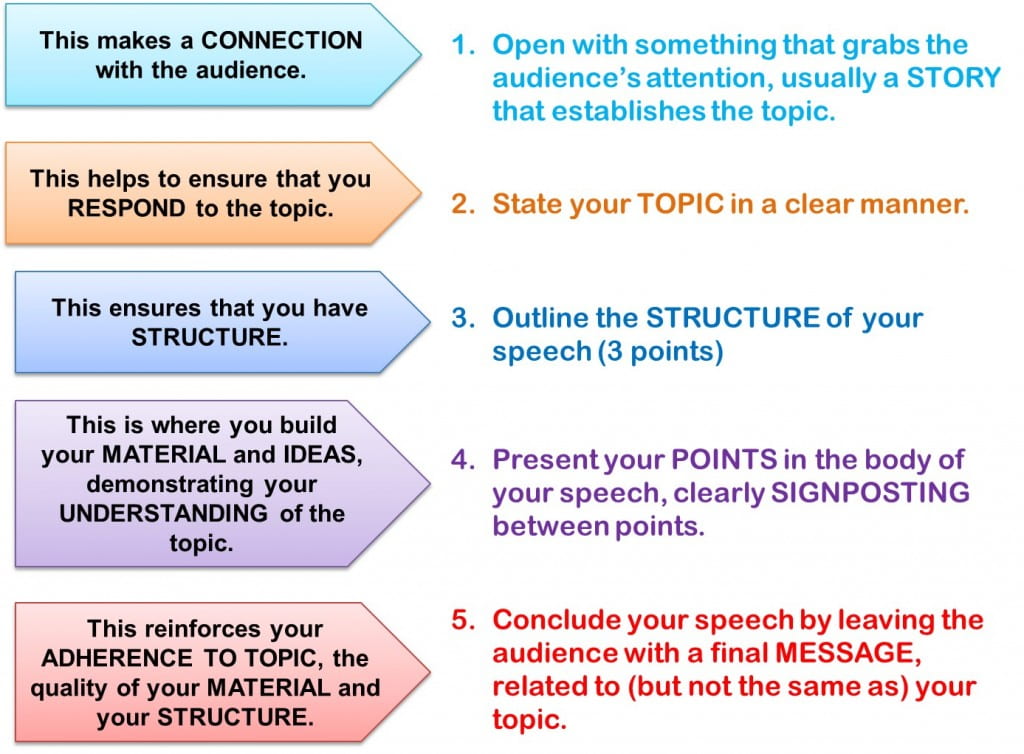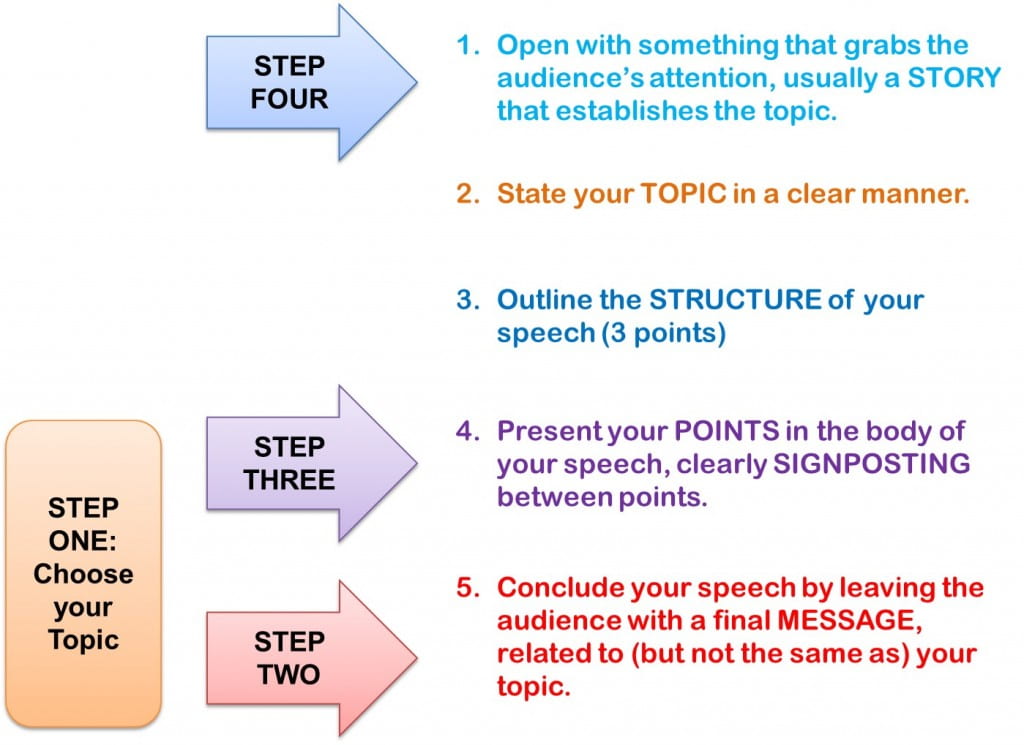DAV Junior/Intermediate/Senior Public Speaking
The DAV Public Speaking competition is a state-wide public speaking competition for students in Years 7 & 8 (Junior), Year 9 & 10 (Intermediate) and Years 11 & 12 (Senior). It is a fantastic competition, with a focus on both prepared speaking (where you present a persuasive speech that is designed to convince your audience of your point of view on an issue) and impromptu speaking.
The skills that you will develop through this competition have a number of big benefits. They directly feed into later competitions, such as the AIDPSC, Rostrum or Plain English Speaking Awards. You will also find that it benefits your schooling, not just in terms of oral presentations, but in relation to your ability to plan and structure responses under time pressure, your ability to think on your feet and your understanding of the finer tools of persuasion.
![]()
Prepared Persuasive Speech
You will be given one opportunity to present a prepared persuasive speech. Your speech will have a set length, and by the time when the round takes place it will ideally be memorised (i.e. you should aim to be able to present your speech without the use of cards or other prompts).
Being Persuasive
The key to this speech is that it must be persuasive. A good approach to creating a persuasive speech is to present a problem and then offer a solution (a Problem/Solution approach). A persuasive speech will usually aim to (1) convince an audience that a problem exists, and (2) offer a convincing solution to that problem. Your speech cannot be descriptive in nature.
It should be very clear to the audience what you are trying to persuade them of. The persuasive element may arise in establishing whether a problem exists, convincing the audience that your solution will make a substantial difference, or in both establishing the problem and convincing people of a solution in relative equal measure.
Stories are often a very good way of establishing the human dimension of a problem, creating a connection with an audience, engaging them and evoking an emotional response.
Statistics, while useful, should be used sparingly in order to establish the breadth of a problem. They often work well after, not before in instead of, anecdotal evidence (i.e. a story).
Structure
Ensure that you have a clear structure to your speech, and make sure you explicitly state your topic/problem somewhere near the beginning of your speech. There should be a clear introduction, development and conclusion, although these do not have to be as rigid as they would be in, for example, an essay (for example, your introduction could be an anecdote that illustrates the problem that you will be exploring, or you may introduce an new argument with the use of a rhetorical question, etc.).
Begin writing your speech early, and be prepared to go through many version and revisions – editing is essential if you want to perform at a higher level.
Example
St Leonard’s student Niamh Nolan won the Victorian Grand Final of the DAV Junior Public Speaking competition. You can read the text of her winning persuasive speech below. Her speech was on domestic violence against women as a form of honour killing and was in response to the topic ‘Women around the world’. You can read her speech here:
![]()
Impromptu Speech
Speakers will be given a list of two choices, from which they choose one.
You can have a look at the AIDPSC Impromptu Speaking page for examples of some longer, more complex, high-quality impromptu responses (note that these speeches are 3 to 5 minutes in length with 2 minutes preparation time, with no notes allowed).
Topics
The types of topics used by the DAV will not require any specialist or prepared knowledge. Instead, the speaker will be required to speak about things that they are familiar with.
Examples of topics from last year include:
- I could not survive without
- A lesson from the past
- Something I wish existed, that doesn’t yet
- It is better to try and fail, than not to try at all
Impromptu speeches are not required to be persuasive (i.e. they can be descriptive instead), although they can be persuasive if students wish for them to be. Often a persuasive speech will have a clearer structure and purpose than one which is purely descriptive.
Practice topics can be found in the documents below. Each PDF document has 14 pages of topics with 2 topics per page. Only flip to a new page when you’re ready to practice! Pick one topic from the page and have a go at planning and presenting a speech:
- Junior Impromptu Speaking Practice Topics #1
- Junior Impromptu Speaking Practice Topics #2
- Junior Impromptu Speaking Practice Topics #3
- Junior Impromptu Speaking Practice Topics #4
Structure
One of the most important things to have in an impromptu speech is a clear structure and purpose. This takes practice, as there is no one approach that will work with every prompt. The more familiar you become with the style of speaking, and the more you experiment with different structures, the more ideas and approaches you will have to draw upon.
Some speakers find the following approaches to be useful when writing and structuring a speech under time pressures. There are no strict rules with any of these approaches, and you will not gain marks for using them in any specific manner. Pay around with them and use the ones that make the most sense to you:
- What, Why, How: Turn the prompt into 3 questions, which you then answer in turn; for example “What does … mean?”, “Why is … important?” and “How can we achieve … ?”
- Individual, National, Global: Look at the prompt from three different levels in order to discuss its different effects; e.g. at an individual level, at a national level and at a global level.
- Problem, Cause, Solution: If the prompt ties in with a problem of some sort, you can discuss it by using a 3 step structure: firstly, identify what the problem is; secondly, identify what is causing the problem; finally, discuss a possible solution that addresses this cause.
- Past, Present, Future: Take the prompt and look at how it has been used in the past, the role it has in the present, and the effect it could have in the future.
- Social, Economic, Environmental (or Cultural, etc.): Discuss the effect that the prompt has from three different perspectives, such as the social impact, the economic impact and the environmental impact.
- Point, Reason, Example, Summary: See ‘Speaking and Debating with Style, ‘Chapter 14: Impromptu Speaking‘
- Yes, Argument, No, Argument: See Speaking and Debating with Style, ‘Chapter 14: Impromptu Speaking’
Given the short speaking time, you will find that having 3 points to discuss should be sufficient.
Other Advice
Opening with a story or anecdote is often a good way to establish a connection with the audience.
Always remember to state your topic directly, ideally near the beginning of your speech. (e.g. “And this brings me to my topic, which is…”)
Remember to signpost clearly at the beginning of your speech and when moving between points.
Use your planning time to figure out what you want your take-away message to be (i.e. what is the idea or message which you want your audience to take away at the end of your speech?). Sticking to this message will give your speech a stronger sense of structure.
.
.
A basic structure for an impromptu speech is as follows:
.
A basic approach to planning an impromptu speech is as follows:
![]()
Judging Criteria (Persuasive and Impromptu)
There are 4 key components to a successful PERSUASIVE speech:
- The subject matter for the prepared speech should be persuasive in some way;
- The subject matter should be well constructed;
- The delivery must be convincing and engaging;
- The words of the speech should be concise, precise and accessible to the audience
There are 4 key components to a successful IMPROMPTU speech:
- The subject matter for the impromptu speech should be either persuasive or descriptive in some way;
- The subject matter should be well constructed;
- The delivery must be convincing and engaging;
- The words of the speech should be concise, precise and accessible to the audience
Both Speeches will be marked against the sub-criteria of Matter and Manner.
Matter involves:
- Subject matter of the speech: Does it aim to be persuasive? Is it well-reasoned? Is it engaging? Is there a clear sense of “message” in the speech?
- Structure of the speech/the logical development of the speech: Does the speech make its purpose clear at the start? Does the speech have a clear structure? Does the speech develop its ideas logically?
Manner involves:
- Fundamental tools of persuasiveness: clear speech and eye contact
- Voice
- Body language
- Tailoring speaking style to match the content of the speech
- Varying speaking styles in order to hold the audience’s attention
- The speech should be delivered with conviction and emphasis, but the delivery should not distract from the content.


